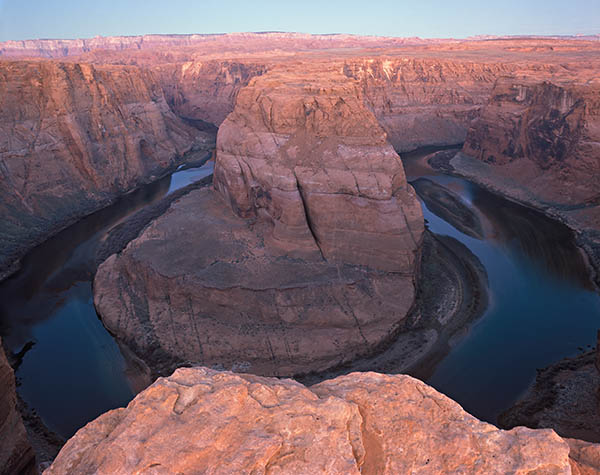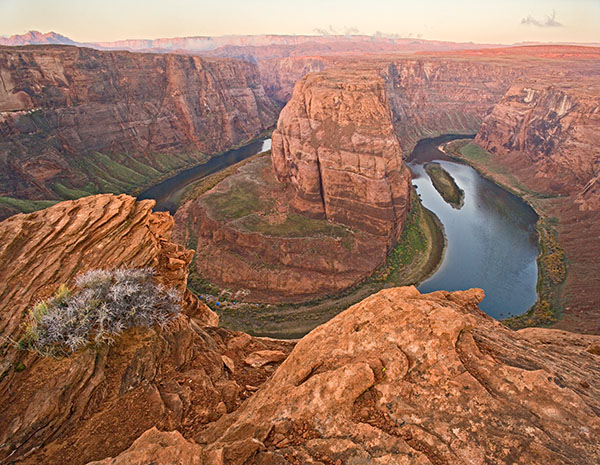
|
Introduction
How do you learn how to see? This is a question many people ask themselves when they study photography with the goal of improving their work and of developing a personal style. Eventually, photography -- as well as all the visual arts-- is about seeing. Therefore, learning how to see, meaning learning how to see differently from how other people see, or learning how to see what others do not see, is primordial.
There is seeing and there is seeing. Eventually, the process of learning how to see takes place in the field, when you are confronted by your subject and when you have to make decisions about composition and tonality control. Those are the two most difficult areas of photography. Mastering both is the key to becoming a better photographer. Together they form what we call seeing. Mastering them is the process through which ones learns how to see photographically.
How this learning journey takes place is different for all of us. Below is the account of Jeff's Journey. It is one among many, but it is an interesting one. Your experience, as they say, may be different. But no matter what shape your own journey towards learning how to see takes, it will have some common grounds with my journey, or Jeff's Journey, or other photographer's journey.
Below are two examples of the same location seen in 2 different ways. You can see my own visions of this location in a collection of photographs of Horsehoe Bend that I have assembled at this link. These photographs were taken over a period of several years.
Essay by Jeff Ball
Alain emphasizes in his writings and workshops the importance of returning to locations in order to explore new creative possibilities. Many may say "ah, what the heck, I have been there and shot that." But I tend to listen to Alain and take his advice to heart. I have Alain to thank for making it possible for me to visit Horseshoe Bend on two occasions separated by 2 and 3/4 years. The first visit was a few days prior to attending the Canyon de Chelly workshop in Chinle in March 2004. I decided to visit the Page area for some additional photography before I set out for Chinle.
My experience with landscape photography was very limited as I was transitioning from an intensive effort in astrophotography. My gear at the time was a Pentax 67 and a Canon 10D. The 10D gave me the confidence that the landscape photography learning curve could now be climbed at a much faster pace, and so I enrolled in Alain's de Chelly workshop. Of course, the only Horseshoe Bend images I had seen prior to my visit were Alain's, so my visualization was stuck in a "copy-cat" mode at the time. The best effort from that trip can be seen below.

Horseshoe Bend - March 2004
Pentax 6x7 with 55mm lens and Provia transparency film
The second visit to Horseshoe Bend was the result of attending the Digital Fine Art Summit in November 2006. The attendees visited Horseshoe Bend on two occasions for early morning photography. My approach was very different than 3 years ago and the result can be seen below.

Horseshoe Bend - November 2006
Three-Frames panoramic Vertical stitch created with a Canon 5D with the 24mm Tilt/Shift lens
Now I am not going to comment on the qualities of each individual photo. You can make your own artistic and technical judgments. For me, this has been an exercise in exploring the technical and artistic approaches that only time has influenced. The location is exactly the same and the lighting conditions are nearly identical as they should be on clear mornings in the high plateau. The only thing different is me....well and some camera gear. But really the main difference is me. These differences are in how I am now visualizing the image compared to two years ago. So much has influenced me over those two years, but hopefully the most important influence has been the discovery of my own personal style. The influences are too numerous to mention, but I think it is important to state that in the nearly 3 year period I attended 5 workshops with Alain and Natalie and also studied in Alain's One on One Consultation program.
For me there is a marked difference in visualization. How do I want the viewer to become involved in the image? As Ansel wrote, "there are always two people in the photograph; you and the viewer." How am I now visualizing a scene that takes into account the viewers' point of view? The photographs speak for themselves and you can determine how I may have changed over the years in my approach to visualization.
I simply was not capable of taking the November 2006 image in March of 2003. Whether you like the images or not, I do believe you would agree that they show a radical change in visualization and final presentation. Landscape photography is such an incredibly stimulating art form. Subtle camera movements or contrast control can make the biggest difference in an image and I look forward to continuing my skill development in these areas.
If you are not incorporating the "revisit to a familiar location" skill enhancement exercise, I encourage you to do so. It provides a wonderful way to reflect upon the photographic influences from visit to visit and may help you better define your own personal photographic style. At least it will provide a benchmark upon which you can evaluate your photography with regards to visualization, digital technique, image optimization, and personal style.
Best wishes in your own photographic pursuits.
Jeff Ball
Introduction Copyright © Alain Briot 2007
Essay and photographs Copyright © Jeff Ball 2007
All rights reserved worldwide
.
|
 |
|
|
|
|